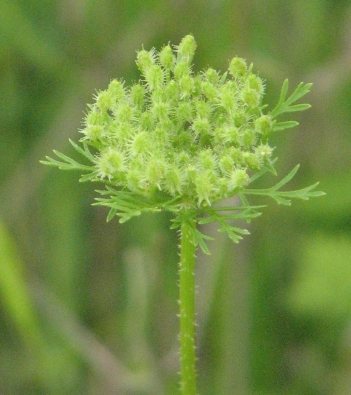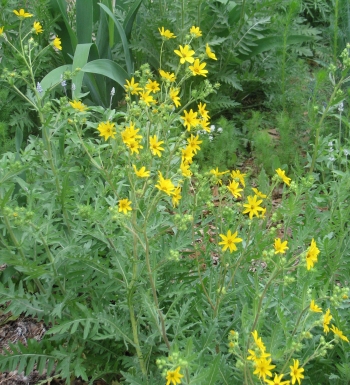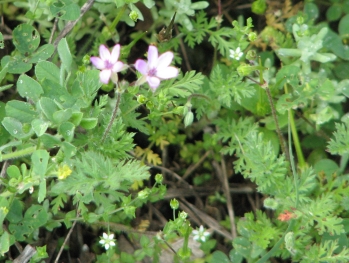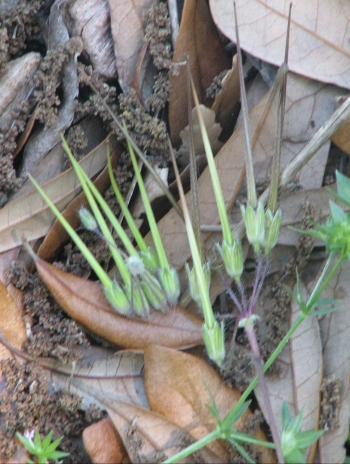Common Yarrow (Milfoil) Achillea millefolium. This tall stemmed, somewhat pithy plant with slightly grooved, fuzzy stalks rises from a rosette of compound pinnate, fern-like leaves that are rounded, rather than pointed on the ends. Leaf petioles clasp the stalk, a filamentous sheath wrapping around the entire node. The stalk is divided at conspicuous nodes, stems arranged in an alternating spiral at each node. Pithy stems terminate in a compound umbel of small, white flowers, nestled in a rosette of pinnate, bract like leaflets. Each flower is composed of 5 white petals and 5 stamen tip with white anthers, all centered around a bare yellow disk with a towering, smooth pistol. Each petal is divided in two. Flowers convert to a mass of sticky (Velcro) seed capsules that cling to hair or clothing, but which are much larger than Hedge Parsley. Lawns, PDU, PL (108) 4/20/15-5/20/15; 16, 17, 18, 19, 20 no obs;

Common Yarrow habit; beginning as a rosette of fine, compound pinnate leaves with rounded tips, stem leaves arranged in an alternating spiral around the grooved, hairy stalk, terminating in a compound umbel of small white flowers
Note; compound umbels of small, white flowers and stamen tipped with white anthers, arranged around a bare yellow center
Note; each petal is split in two

Note; fine compound pinnate leaves clasp the grooved stems, a filamentous sheath wrapped around the leaf nodes

Note; dense cluster of stick-tight seed capsules, nestled in a rosette of fine, pinnate leaflets


























